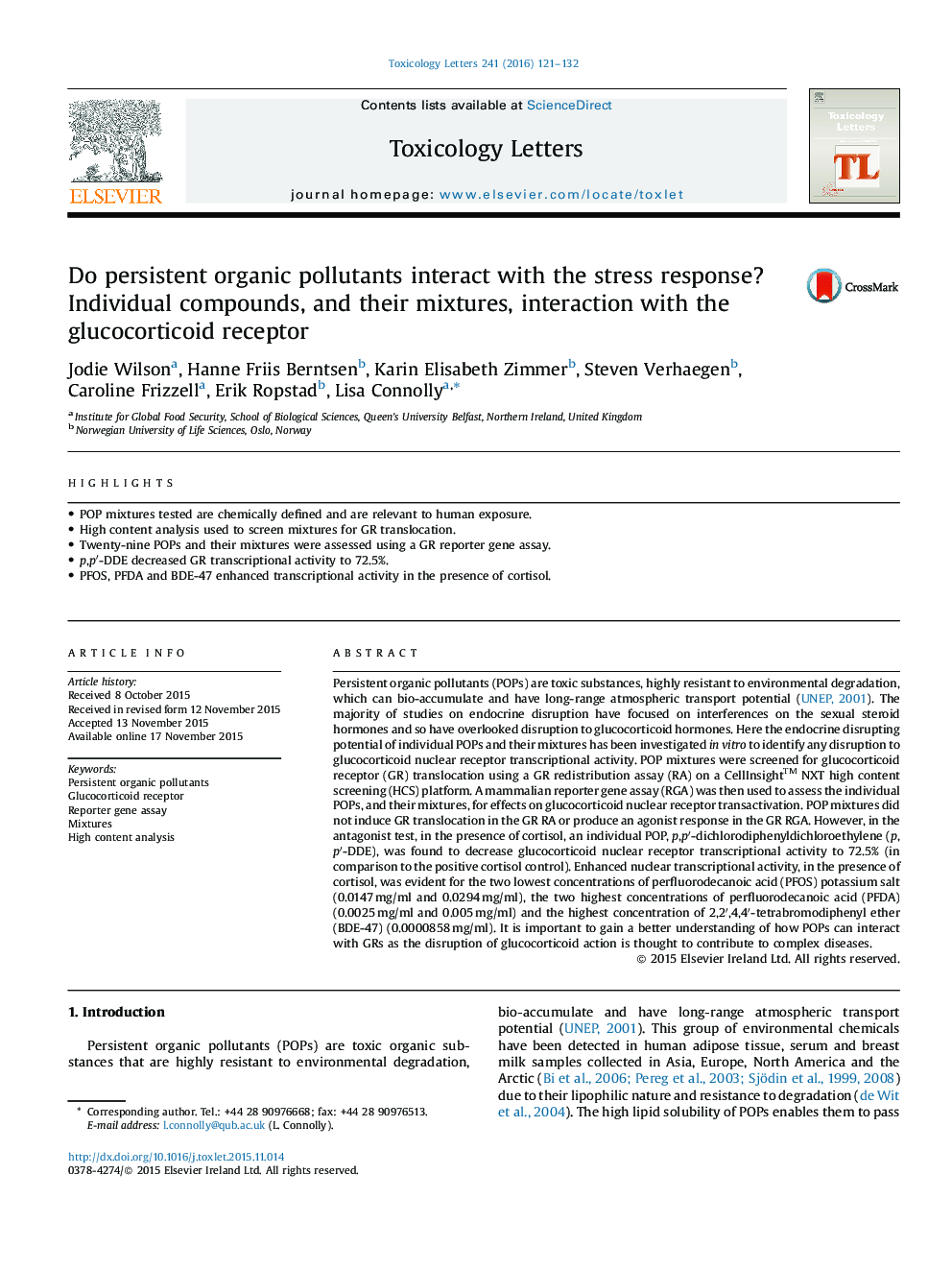| کد مقاله | کد نشریه | سال انتشار | مقاله انگلیسی | نسخه تمام متن |
|---|---|---|---|---|
| 2598546 | 1562631 | 2016 | 12 صفحه PDF | دانلود رایگان |
• POP mixtures tested are chemically defined and are relevant to human exposure.
• High content analysis used to screen mixtures for GR translocation.
• Twenty-nine POPs and their mixtures were assessed using a GR reporter gene assay.
• p,p′-DDE decreased GR transcriptional activity to 72.5%.
• PFOS, PFDA and BDE-47 enhanced transcriptional activity in the presence of cortisol.
Persistent organic pollutants (POPs) are toxic substances, highly resistant to environmental degradation, which can bio-accumulate and have long-range atmospheric transport potential (UNEP, 2001). The majority of studies on endocrine disruption have focused on interferences on the sexual steroid hormones and so have overlooked disruption to glucocorticoid hormones. Here the endocrine disrupting potential of individual POPs and their mixtures has been investigated in vitro to identify any disruption to glucocorticoid nuclear receptor transcriptional activity. POP mixtures were screened for glucocorticoid receptor (GR) translocation using a GR redistribution assay (RA) on a CellInsight™ NXT high content screening (HCS) platform. A mammalian reporter gene assay (RGA) was then used to assess the individual POPs, and their mixtures, for effects on glucocorticoid nuclear receptor transactivation. POP mixtures did not induce GR translocation in the GR RA or produce an agonist response in the GR RGA. However, in the antagonist test, in the presence of cortisol, an individual POP, p,p′-dichlorodiphenyldichloroethylene (p,p′-DDE), was found to decrease glucocorticoid nuclear receptor transcriptional activity to 72.5% (in comparison to the positive cortisol control). Enhanced nuclear transcriptional activity, in the presence of cortisol, was evident for the two lowest concentrations of perfluorodecanoic acid (PFOS) potassium salt (0.0147 mg/ml and 0.0294 mg/ml), the two highest concentrations of perfluorodecanoic acid (PFDA) (0.0025 mg/ml and 0.005 mg/ml) and the highest concentration of 2,2′,4,4′-tetrabromodiphenyl ether (BDE-47) (0.0000858 mg/ml). It is important to gain a better understanding of how POPs can interact with GRs as the disruption of glucocorticoid action is thought to contribute to complex diseases.
Journal: Toxicology Letters - Volume 241, 22 January 2016, Pages 121–132
